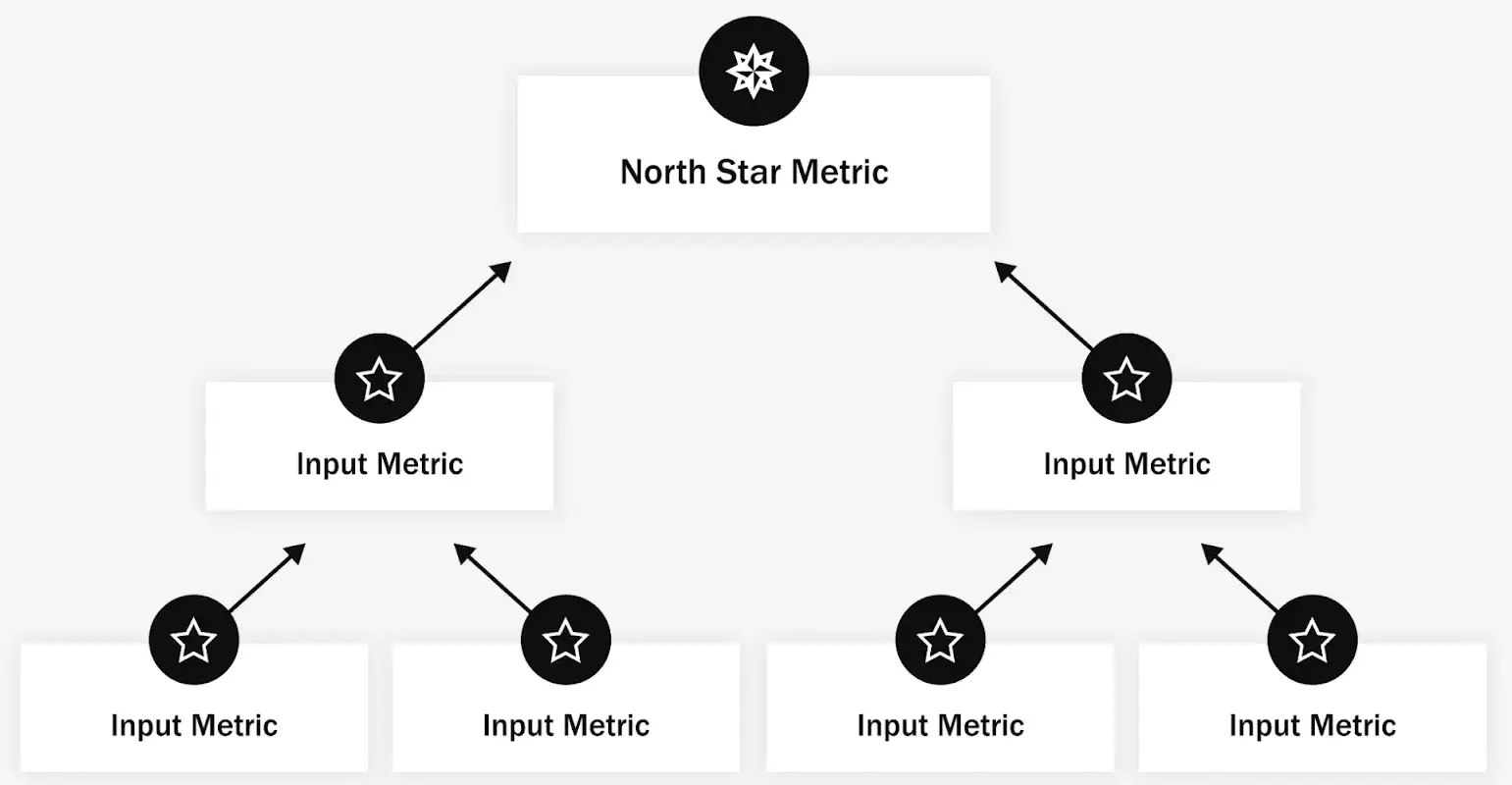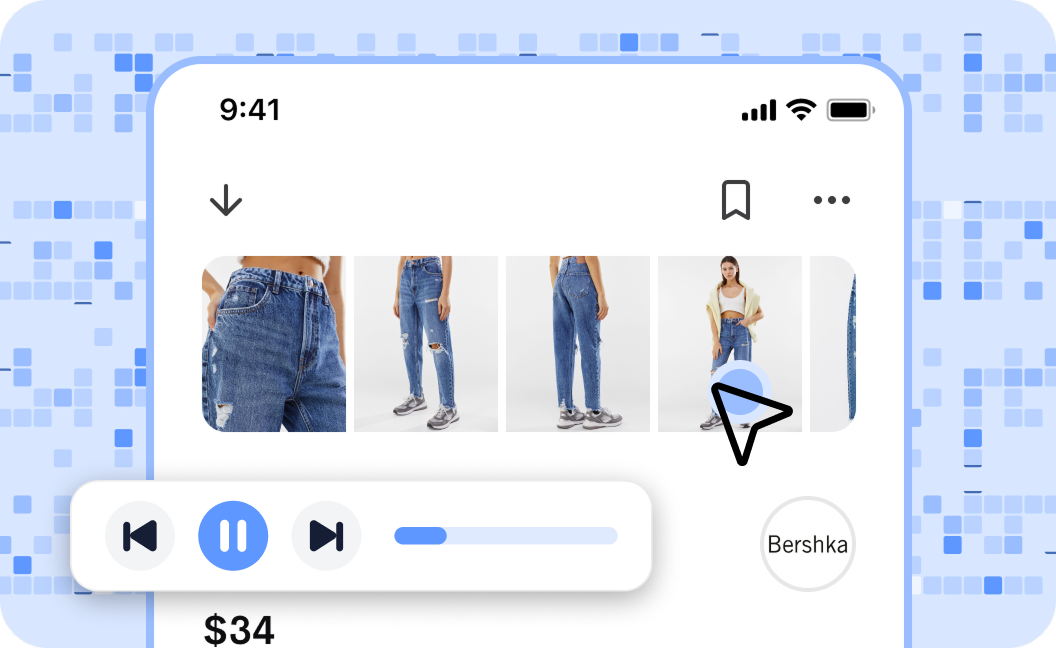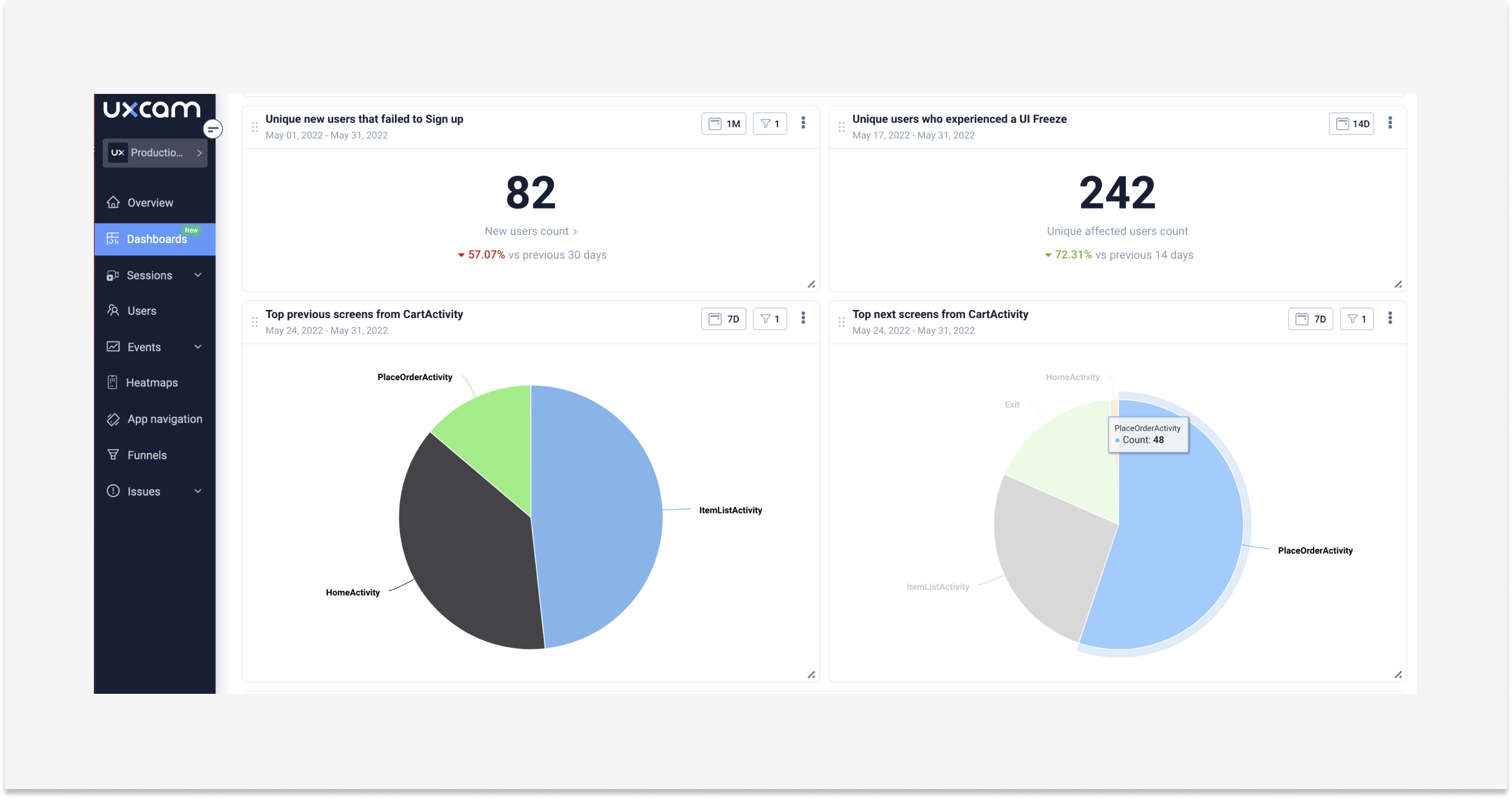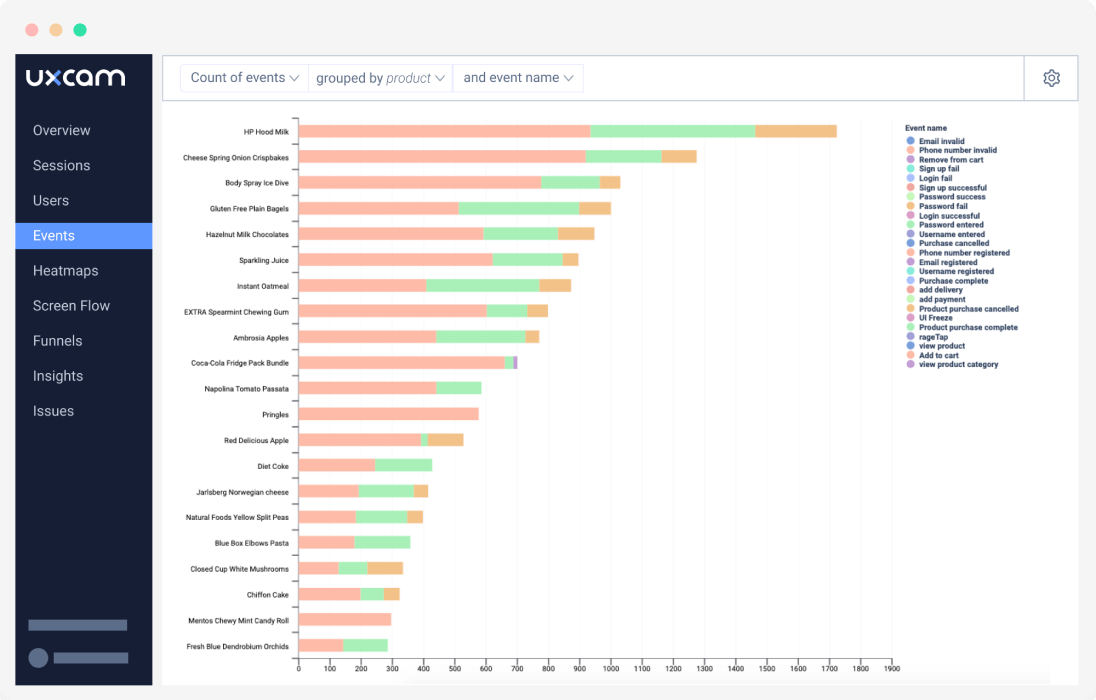Back to blog
5 MIN READ
How to Define North Star Metric (Tools, Tips & Tactics)
PUBLISHED
13 May, 2024

Product Analytics Expert
If you're running a business, you likely have multiple metrics to track and optimize.
North Star metrics offer a simple, effective way to focus your efforts and align teams with very different day-to-day goals. But, defining (and tracking) your North Start Metric can be challenging without the proper guidance and tools.
At UXCam, we’ve helped thousands of mobile product teams get a handle on their analytics and start making data-driven decisions. And in this guide, we’ll share our step-by-step process for finding your North Star metric.
Let’s dive in.
What is a North Star metric?
A North Star Metric (NSM) is a singular metric that a company focuses on to measure the success and growth of its product. It reflects the core value that the product delivers to its customers.
For product managers in the mobile app tech or software industry, the NSM acts as a focal point to guide decision-making, resource allocation, and strategic direction. If your NSM improves due to a decision, odds are it was a good decision.

Here are some key aspects of a North Star Metric:
Core value reflection: It should encapsulate the core value your product delivers to its users. It's not just about superficial growth, but about delivering real, sustained value.
Leading indicator: The NSM is often a leading indicator of future success, and improving it should generally lead to growth in other important metrics like revenue or user retention.
Motivation: It serves to align and motivate the entire team around a single goal, ensuring everyone is pulling in the same direction to achieve a common objective.
Simplicity: Ideally, it should be a simple, understandable metric that can be easily communicated and tracked over time.
The North Star (Polaris) is a bright star with a stable position in the Northern Sky above the North Pole. This stability and visibility means it’s a simple but powerful navigational tool—a reliable guide to help you get where you want to go.
A North Star metric (NSM) is your organization’s version of Polaris.
Examples of North Star metrics
Specific NSMs vary from company to company because all businesses have different core values and objectives. That said, you can still get a sense of what North Star metrics look like by considering examples.
Here are a few well-known NSMs:
Spotify: Time spent listening.
Airbnb: Number of nights booked.
Uber: Number of trips.
These NSMs (and most NSMs, for that matter) are intuitive.
Spotify’s goal is to keep users engaged. The more time spent listening, the better. Airbnb wants to help people find a place to stay. If the number of nights booked increases, they’re doing their job. For Uber, it’s all about getting customers from point A to point B, and the number of trips tracks that well.
For these companies, all initiatives, metrics, and tactics are aligned with their NSMs.
Why is finding your North Star metric important?
The importance of identifying your North Star Metric cannot be overstated—here’s why:
Unified focus: NSMs align the entire company towards a common objective. While individual teams may have their own specific targets, the overarching goal remains the same for everyone, fostering a sense of unity and shared purpose.
Transparency: NSMs serve as a clear indicator of the company’s performance. They provide an easily understandable measure that allows everyone within the organization to assess how well the company is doing at any given time.
Customer centricity: By focusing on a North Star Metric that reflects customer value, the company naturally shifts towards enhancing customer value rather than extracting it. This leads to an increased emphasis on customer retention as the company strives to deliver value and meet customer needs continually.
How to define and track your North Star metric
Step 1 - Define your user success moment
A user’s success moment is when they receive that core value your product offers.
For example, at UXCam, we help mobile product teams understand the “whys” behind user behavior through comprehensive analytics. As a result, our users are successful whenever they uncover insights hidden within session data.
To figure out your user success moment, list the moments when users experience the real value of your product.
This could be anything—think:
Making a purchase (e.g., ASOS)
Uploading a file (e.g., Dropbox)
Sending a message (e.g., WhatsApp)
The only requirement at this stage is that you choose one success moment. If there are multiple contenders, consider ways to generalize them into one success moment.
Step 2 - Make your user success moment measurable
Your success moment is the foundation of your North Star Metric. You just need to make it measurable. To do that, you need to match your user success moment with a metric that (roughly) tracks it.
To illustrate, let’s return to UXCam’s success moment—when users uncover insights hidden within session data.


Obviously, we can’t track the exact number of times our tool leads to insights. However, we can track the number of sessions analyzed using our tool. It’s a rough stand-in that can tell us whether or not users are uncovering insights—which means it’s a perfect NSM.
More often than not, your success moment will pair naturally with a North Star Metric. But don’t be afraid to get creative and think about alternative metrics if something isn’t quite right.
Step 3 - Set a measurement frequency
NSMs only work as guides when you can compare measurements over time. This means you’ll also need to set a measurement frequency for your metric to guide decisions.
Setting a frequency is easy—you can measure most NSMs daily, weekly, or monthly. You’ll want to make sure the frequency matches the rate at which user behavior changes and evolves.
For NSMs that fluctuate wildly (e.g., revenue), you might consider setting a more extended measurement frequency—like quarterly or annually—so that the noise of day-to-day user behavior doesn’t cloud your judgment.
For less variable NSMs (e.g., funnel drop-off), you can measure more frequently, such as daily or weekly. However, you should avoid measuring too often—doing so will not provide new insights and will ultimately waste time and energy.
Step 4 - Set up monitoring & analytics
Last, it’s time to set up monitoring and analytics for your NSM.


To do this, you’ll need a monitoring tool with the scope required to track your NSM. Make sure the tool you select allows for granular user segmentation, data exploration, dashboards, and (ideally) anomaly detection.
Potential monitoring tools include:
Google Analytics: For website-based NSMs.
Hotjar: For website user behavior NSMs.
UXCam: For mobile user behavior NSMs.


UXCam features a lightweight SDK and tagless autocapture that allow you to implement user behavior monitoring quickly and effectively. You can easily set up custom events and properties, segment your data, and create custom dashboards for easy monitoring.
Once you have the right tool in place, automate the data collection and reporting process as much as possible. This will save time and energy while providing more accurate insights.
Follow your North Star metric with UXCam
Discovering your North Star Metric is the compass guiding your product's success. By identifying the crucial user behaviors that align with your core value proposition, you can focus your efforts and measure your growth effectively.
At UXCam, we help mobile product teams keep tabs on key app metrics and patterns that let them make targeted improvements. With our tagless autocapture and custom dashboards, you can quickly and easily create reports to track your NSM’s performance over time.
Sign up now to start your free trial.
You might also be interested in these;
North Star metric examples from tech giants
North Star metric framework - A comprehensive guide
How to analyze session recordings
Product optimization - 5 steps to deliver a better product
5 Examples of product strategy and how to create one
AUTHOR

Tope Longe
Product Analytics Expert
Ardent technophile exploring the world of mobile app product management at UXCam.
What’s UXCam?
Related articles
App Analytics
Mobile App Tracking: Practical Guide & Best Tools [2026]
The best tracking tools for mobile...

Jonas Kurzweg
Product Analytics Expert
App Analytics
Top Analytics SDKs 2026
Pick the right analytics SDKs to improve your app's...

Jonas Kurzweg
Product Analytics Expert
Product best practices
8 Best UX Analytics Tools and Software We’ve Tested 2025
A good UX design is key when it comes to user satisfaction. Learn about five of the best UX analytics tools you can use to get valuable insights about user...

Jonas Kurzweg
Product Analytics Expert


